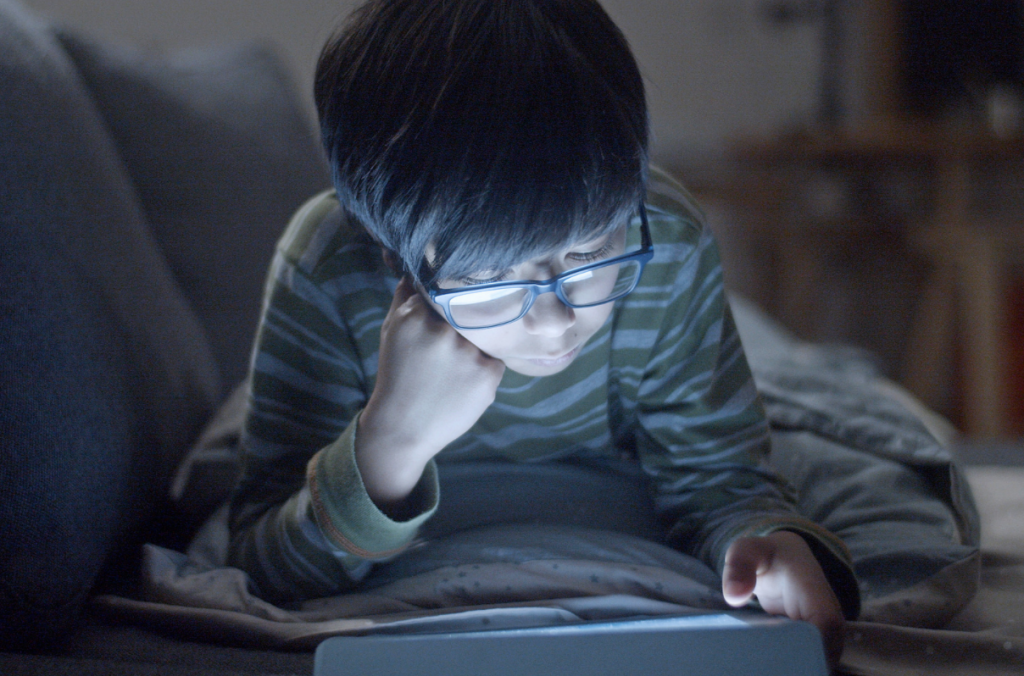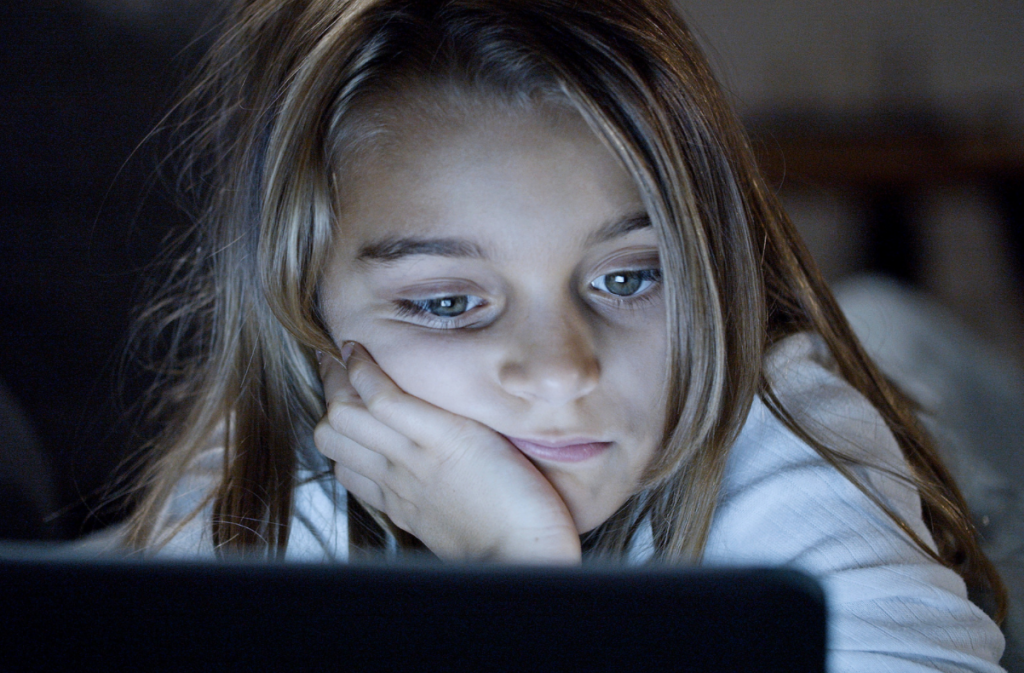
Even before the onset of the COVID-19 pandemic, children’s screen use was a point of concern for many caregivers and professionals alike. Children have watched T.V for decades now, and with the introduction of computers and laptops, followed by smartphones, tablets, and e-readers, children are being introduced to screens at younger and younger ages and relying on screens in their daily lives more and more. Parents and professionals have been asking questions for years about how much time children should spend on screens. In addition, they have been concerned about the content and its influence on children, amongst other concerns.
Children’s Screen Time Use: Pre- Pandemic
As stated above, concerns about children and screen use are nothing new. To address these concerns, in 2016 the American Academy of Pediatrics (AAP) released their screen time recommendations for children under 18 years of age. While for younger children, the AAP specified time limits on screen use, for older children, recommendations center around encouraging healthy media habits and teaching media literacy. In light of all the changes related to the COVID-19 pandemic, the 2016 recommendations now seem outdated and oftentimes, unrealistic.
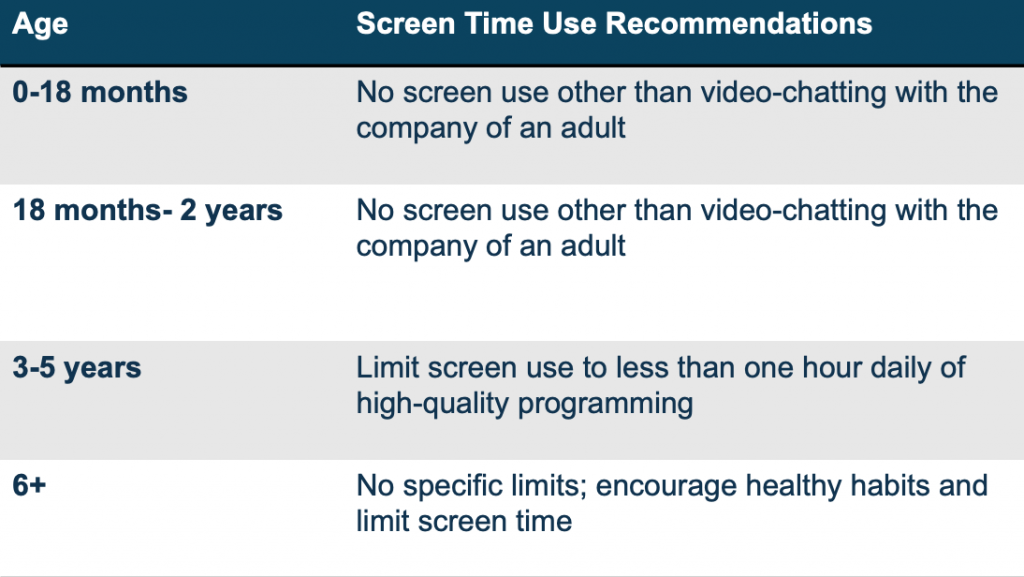
Image Source: Authors
The latest data from the pre-pandemic era, compiled in 2019 and early 2020 by Common Sense Media, shows that the average time spent on screens ranged from 49 minutes a day for infants and toddlers to over 7 hours a day for teenagers. The same data shows that 15% of tweens and 29% of teens spent more than 9 hours on screens daily. As you can see from the graph below, as age increases, so does screen time usage amongst children.
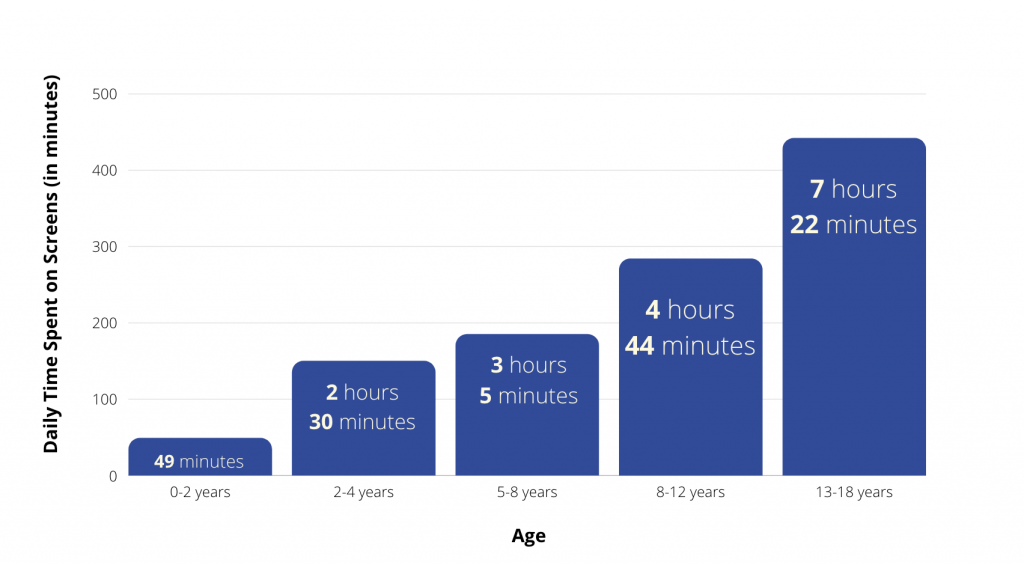
Image Source: Authors
The Effects of COVID-19 on Children’s Screen Time Usage
In March of 2020, due to the onset of the COVID-19 pandemic, the majority of children switched to online or remote schooling. In April 2020, a survey conducted by Parents Together reported that the average time children spent online doubled, from 3 to 6 hours daily, compared to previous survey results pre-pandemic. In addition, they reported that 49% of children were spending more than 6 hours per day online, compared to about 8% of children pre-pandemic. Furthermore, 26% of children were spending more than 8 hours per day online, compared to 4% of children pre-pandemic.
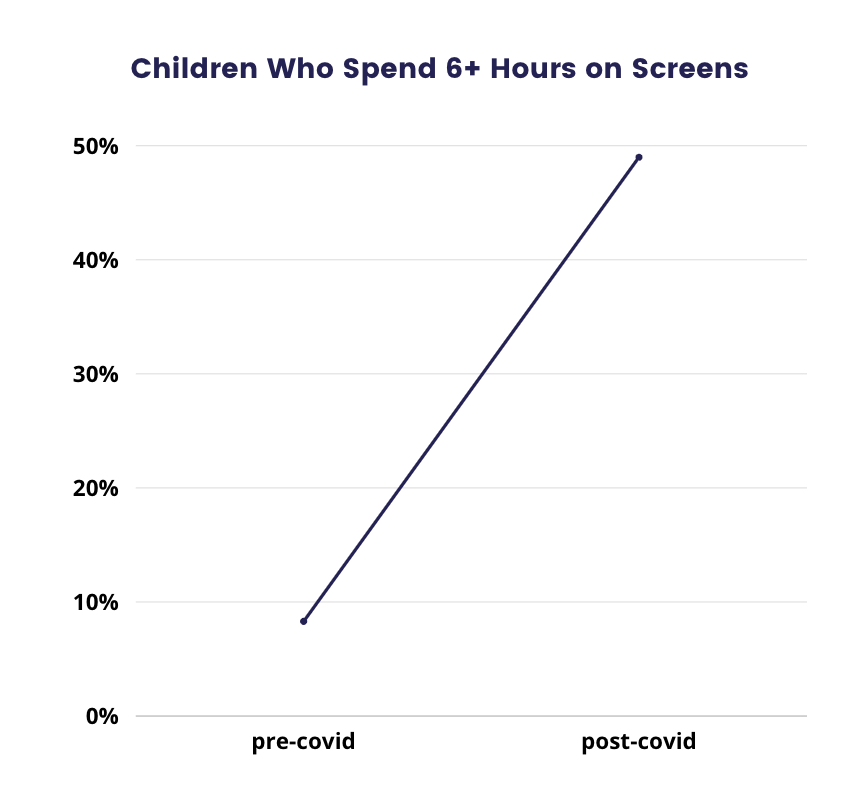
Source: Authors
The increase of time spent on screens is understandable, since most children switched to remote schooling, and could only stay in touch with friends through online interactions. Regardless of the reasons, children were spending more time on screens than ever before.
There is more recent evidence to suggest the increased use of screens by children has not subsided. In March of 2021, The Digital Wellness Lab at Boston Children’s Hospital surveyed over 1500 caregivers regarding children’s screen use. They found that 65% of caregivers surveyed reported that their children were spending more time watching videos on a phone, tablet, or computer. In addition, 59% of caregivers reported an increase in their child’s time spent watching television and playing video games on a computer or console and 57% of caregivers reported an increase in their child’s time spent playing video games on mobile devices. There were also reported increases in the amount of time spent making video calls (49%) and using social media (45%) amongst children. Given such a dramatic increase in screen time use amongst children, it is understandable why many caregivers expressed concern.
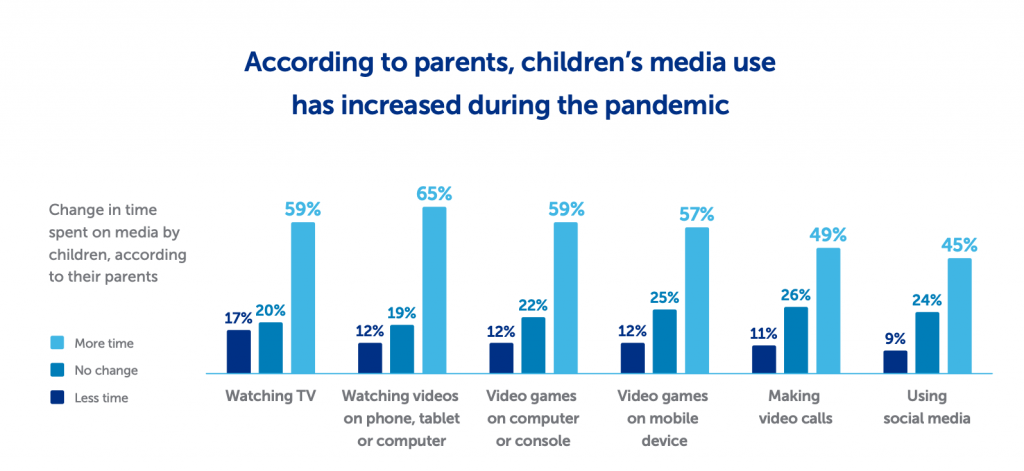
Image Source: Digital Wellness Lab Parent Survey
The results of the report also found that 36% of parents surveyed stated that they were having more frequent arguments with their children about screen use since the onset of the pandemic. The most common type of argument caregivers reported was regarding the amount of time the child was using screens (44%), followed by arguments about the context in which the child is using screens (32%), followed by arguments concerning content their child is consuming (20%)
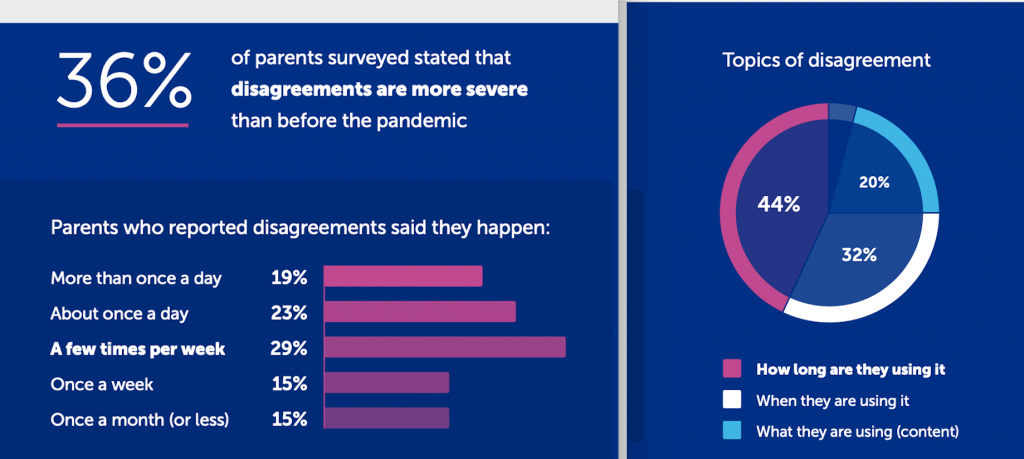
Image Source: Digital Wellness Lab Parent Survey
The increase in children’s screen time has resulted in many concerns for caregivers and professionals alike. Media Dependency Theory posits that an individual uses media to meet their needs and goals. The more an individual does this, the more important the media becomes to them, and the more dependent the individual becomes on media to fulfill their needs. When children become dependent on media, there can be cognitive, emotional, and behavioral effects.
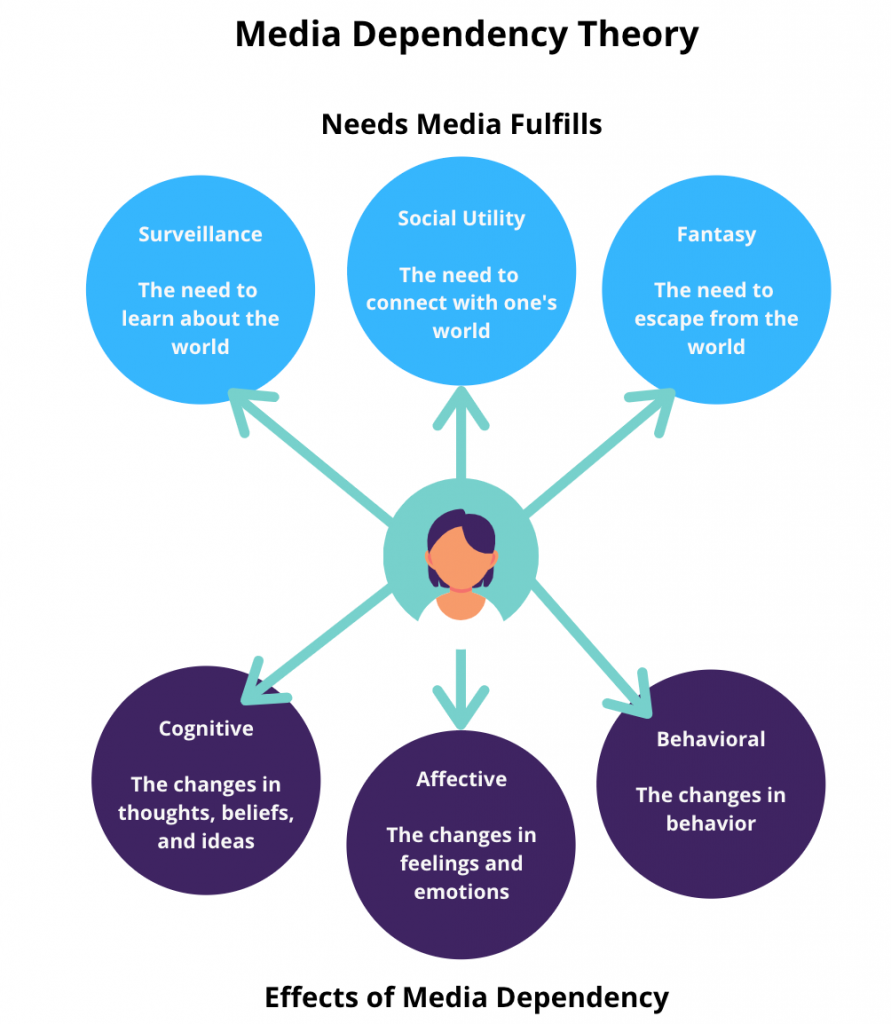
Image Source: Authors
Caregiver Concerns and Effects of Media Dependency
Cognitive Effects: Influence of Content
“We worry that she is turning to the internet for advice when she most needs a trusted adult.”
-Parent Quote
The cognitive effects of media dependency, according to Media Dependency Theory, are the effects that change an individual’s ideas, beliefs, and values. For many caregivers, it can be overwhelming to think that their children are being exposed to a variety of endless outlets that do not reflect the family’s values and ideals. Whether it is videos on YouTube, opinions from comments on social media, or content within video games, it is almost impossible for caregivers to carefully vet every piece of media being consumed by their child. Therefore, it is important to talk to children about what type of content is out there and work on developing media literacy skills in order to foster independent, responsible decision-making when it comes to screen use.
“I couldn’t stand that my seven year old daughter was watching video after video of people opening up boxes of makeup.”
Parent Quote
Emotional Effects: Desensitization
Media dependency theory posits that the media has an impact on the audience’s feelings and emotional responses. Thus, prolonged exposure to emotionally triggering, such as fear-inducing or violent, content can have a numbing effect on the viewer. Many parents and professionals alike are understandably concerned that children will become desensitized to violent or inappropriate content.
“He is scared to speak up in class or try new activities, yet the disturbing images on the screen don’t phase him. I find these images creepy.”
Parent Quote
Behavioral Effects: “Addictive- Like” Behaviors
The Media Dependency Theory also mentions behavioral effects, in which audience members do something they would not have done, or fail to do something that they would have done otherwise, had they not been exposed to media. One of the concerns amongst parents in relation to their child’s screen time is the addictive-like nature of media- as well as the instant gratification it provides, such as in video games and social media. In addition, too much time on screens takes away from other activities that are important for growth and development, such as spending time with friends in person or spending time outside.
“If we don’t shut off the internet for the night, our 16-year old will stay up all night playing video games. He will never sleep.”
-Parent Quote
“My daughter used to go outside and play with friends after school, but now she stays at home and watches YouTube instead.”
Parent Quote
Child Perspectives and Needs Media Fulfills
While parents are valid in their concerns over the effects of media dependency, children are also using screens to meet certain needs. As caregivers, it is important to remember what children are getting out of their screen use, especially during these challenging times. By understanding the needs that are being met through screen use, we can have a more productive conversation with our children on whether or not their screen use is appropriate.
Surveillance: Learning About the World
Within media dependency theory, the need for surveillance is the need for an individual to understand their world. The learning opportunities that the internet provides are endless and some children turn to the internet in order to understand more about the world that they live in. For some children, this looks like watching YouTube videos on different cultures, history, or geography. For others, it can be graphics or visuals that help to better explain confusing concepts or topics. Just like adults, children have the need to understand their environment, as well as their place and role in the world around them.

“It is very interesting to see different worlds, different people, how the perspective is from their point of view. I watch interesting, educational stuff: what is the hottest river in the world? I like watching videos about interesting people and interesting cultures.”
-Child Quote
Social Utility: Connecting with the World
In addition to being able to learn about the world through the use of media and technology, children have also been using screens as a way of connecting with peers, communities, and other groups online. Of course, technology offers ways to video chat with loved ones around the world, which became integral to staying in touch in 2020. In addition, children used screens to connect with others through playing online games, such as Minecraft or, Among Us.

“In Minecraft you can play with friends, you can play with people; there’s communities. A lot of games, you can connect with people. You can even make friends while gaming … In survival mode, it’s fun to play with a community and work together.”
-Child Quote
Fantasy: Escaping from the World
As adults, many of us use screens as a way to relax and be entertained following stressful situations. Similarly, children have been using screens as a way to escape and indulge in a fantasy realm. It is important to remember that the COVID-19 pandemic brought on many abrupt changes and stressors into children’s lives. Many children turned to screens in their free time as a way to escape from the stress of the pandemic. Whether watching an anime series or playing games in which the player can create and explore a world of their own, children have been using screens to disconnect and escape.
“No one is bothering me when I am on screens. I’m free to do what I want.”
-Child Quote
Making Decisions About Children’s Screen Use
When it comes to making decisions regarding children’s use of screens, many factors must be taken into consideration. Before making these decisions, caregivers can ask themselves the following questions:
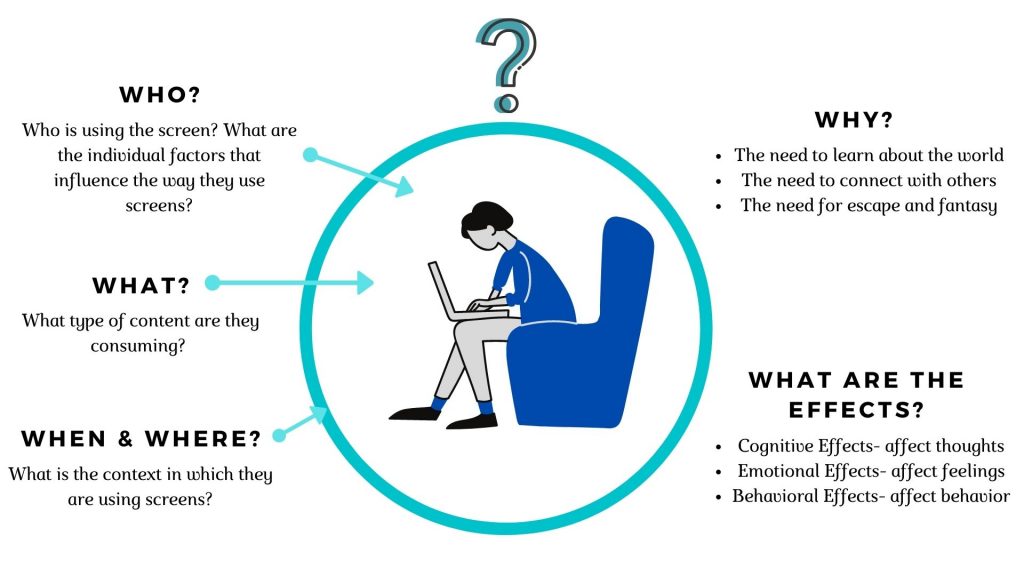
Image Source: Authors
Who is Using Screens?
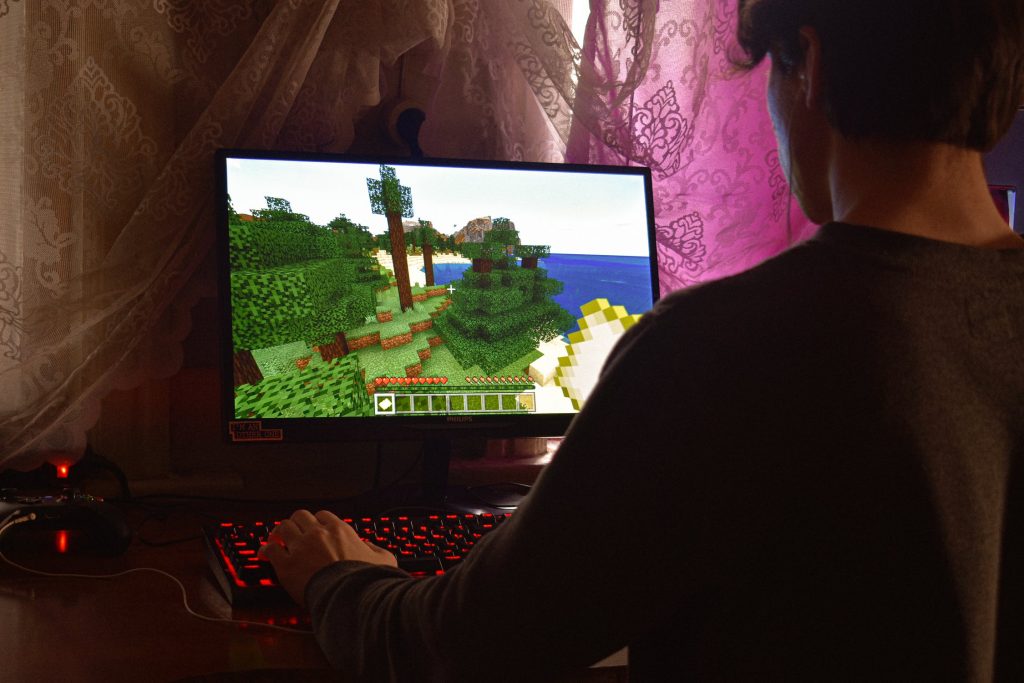
Each child brings their perceptions, opinions, feelings, and temperament to their media experience. Therefore, each child will not interact with screens in the same way. When making decisions about children’s screen use, individual child factors should be taken into account. For example, is what they are doing on screens appropriate for their developmental level and age? Do they become enthralled while on screens, or distracted after a short amount of time? Do they get frustrated or angry easily after being on screens? These are just some examples of the questions caregivers can ask themselves when considering whether or not the screen use is appropriate for their child.
What are They Doing on Screens?
In addition to paying attention to the individual factors that the child brings to the screen use experience, the type of content is incredibly important when making decisions regarding screen use. Caregivers should evaluate the type of content the child is consuming. Is it appropriate? Is it meaningful? Is it creative or educational? Could it be violent or disturbing? Is it in line with the values and beliefs of the family? It is also important to consider who created the content, what its purpose is, and the message it ultimately may be sending to children.
When and Where are They Using Screens?
The third type of factor to consider when making decisions about children’s screen use is the context in which they are using screens. Factors to consider include the time and place the child is using the media, as well as whether or not the child is using the screen actively or letting it play passively in the background. In addition, parents should consider if children are using media alone, or collaboratively with others, and what emotions are being elicited within the context of screen use.
Below are some general guidelines to keep in mind when making decisions regarding children’s use of screens.
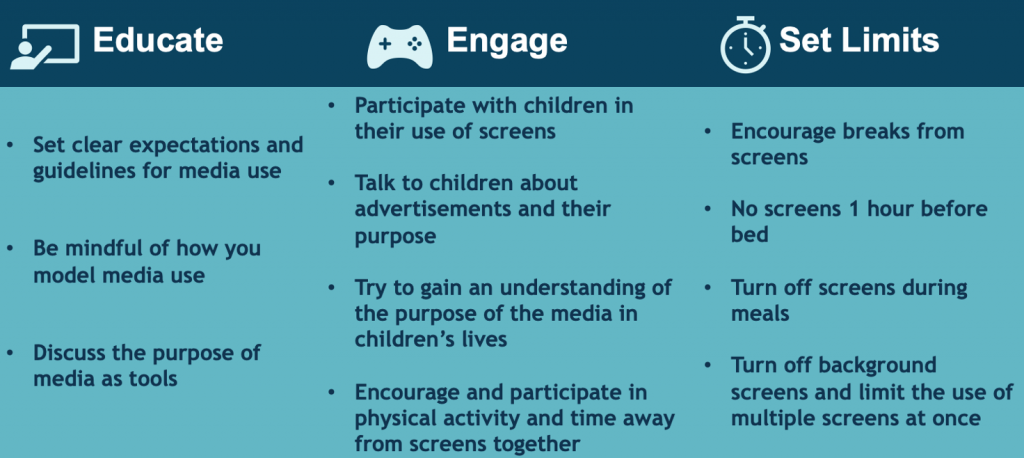
Image Source: Authors
Resource on Making Decisions About Child Screen Time Use
There is no one size fits all solution to balance the needs media fulfills in children’s lives with the effects of media dependency. The resource provided below can help parents and professionals have a conversation with the child and use an individualized problem solving approach to make decisions regarding screen use. The first page of the resource includes the factors related to the individual, the content, and the context in which they are engaging in screen use. Accompanying questions under each topics are listed to help prompt caregivers to consider the factors relevant to making decisions about child screen use.
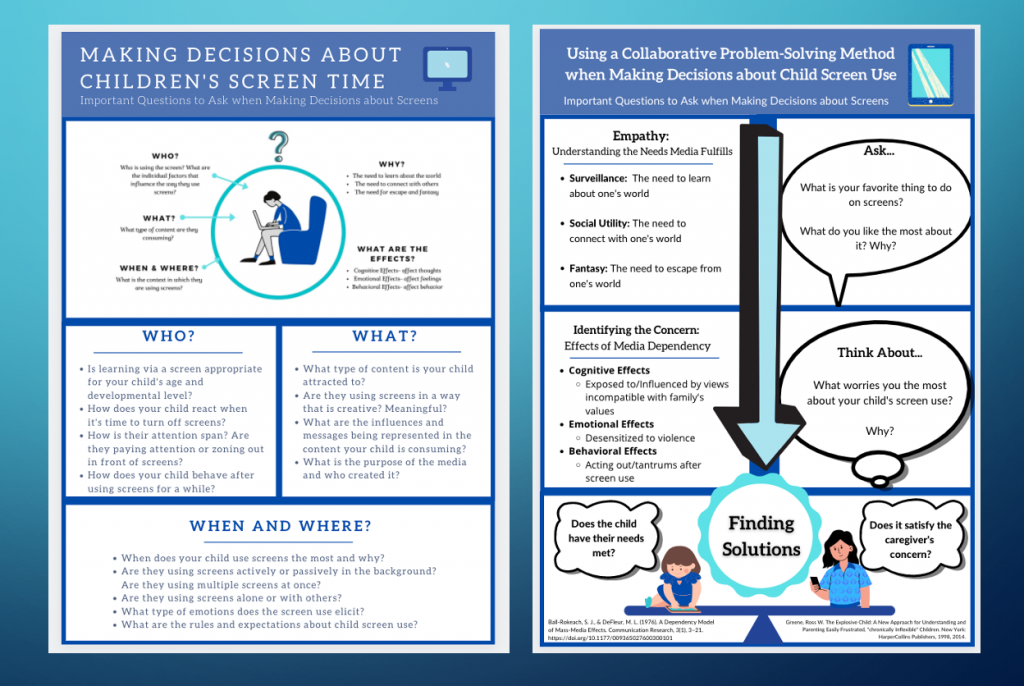
Page 2 of the resource was modeled after a collaborative-problem solving method, developed by Ross Greene. The purpose of this page is to help empathize with the child’s perspective, as well as define the caregiver concerns, to come up with a solution that addresses both caregiver concerns with children’s needs. In the left column, the needs that media fulfills are listed and defined for caregivers to help understand the role of screens in their children’s lives. On the right, caregivers are prompted to ask their children about their screen use in more detail. The second part of page two helps caregivers identify their own main concerns about the effects of their children’s screen use. Finally, the third section is an invitation to collaborate on solutions that meet the children’s needs and address the caregiver’s main concerns. The resource can be found on the Growing Minds blog by clicking the preview above.
Acknowledgments
This blog post was prepared with the help of Grace Murphy, a second-year graduate student at Tufts University’s Eliot-Pearson Department of Child Study and Human Development, concentrating in 21st Century Literacies: Media and Technology. Grace is passionate about improving the lives of children through creating media content with the purpose of educating and informing parents, child caregivers, and practitioners. Her special interests include the social-emotional well-being of children and adolescents, the social/cultural influence of media, and positive representation in media.
*All images linked to original sources- images not sourced were created for the purpose of this blog post and can be sourced back to this page.
References
American Academy of Pediatrics announces new recommendations for children’s media use. http://www.aap.org/en-us/about-the-aap/aap- press-room/Pages/American-Academy-of- Pediatrics-Announces-New-Recommendations-for- Childrens-Media-Use.aspx. Published October 21, 2016.
Ball-Rokeach, S. J., & DeFleur, M. L. (1976). A Dependency Model of Mass-Media Effects. Communication Research, 3(1), 3–21. https://doi.org/10.1177/009365027600300101
Digital Wellness Lab. (2021). Parents’ perspectives: media use and remote learning during the COVID-19 pandemic. Boston Children’s Hospital. https://digitalwellnesslab.org/wp-content/uploads/Digital_Wellness_Lab-Parent_Survey-Media_Use_and_Remote_Learning-Visual_Summary.pdf
Family Digital Wellness Guide, Boston Children’s Hospital, 2020
Greene, Ross W. The Explosive Child: a new approach for understanding and parenting easily frustrated, “chronically Inflexible” children. New York: Harper Collins Publishers, 1998, 2016.
ParentsTogether. Survey shows parents alarmed as kids’
screen time skyrockets during COVID-19 crisis. https://
parents-together.org/survey-shows-parents-alarmed-as-kidsscreen-time-skyrockets-during-covid-19-crisis/?mod=article_
inline.
Rideout, V., & Robb, Michael, B. (2019). “The Common Sense census: Media use by tweens and teens, 2019“. San Francisco, CA: Common Sense Media.
Rideout, V., & Robb, M. B. (2020). The Common Sense census: Media use by kids age zero to eight, 2020. San Francisco, CA: Common Sense Media.
Tiwari, S. (2020). Understanding the 3Cs: Child, Content, and Context in Children’s Educational Media. TechTrends, 64(3), 348–350. https://doi.org/10.1007/s11528-020-00482-8
Zero-Three Choosing Media Content for Young Children Using the E-AIMS Model, 2018


